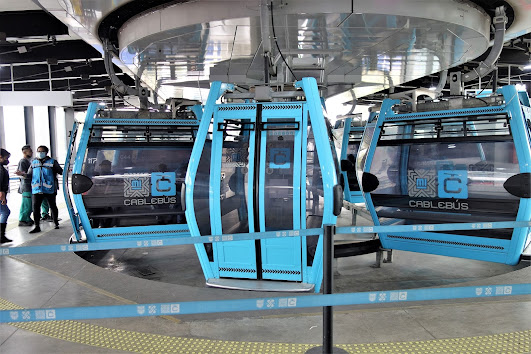Last Sunday, Alejandro and I traveled on one of Mexico City's new aerial cable cars known as the "cablebús". Last year two "cablebús" routes were completed and another one is under construction. They serve densely populated areas of the city where public transportation is difficult. The route that Alejandro and I took crosses the borough of Iztapalapa. It runs for over 6.5 miles above the district and is the longest aerial tramway in the world.
Iztapalapa is the largest and most populated borough in Mexico City with more than 1.8 million residents. It is also one of the poorest parts of the city. More than 40% of the population lives in poverty, and some homes do not even have running water. It also has one of the highest crime rates in the city. This is definitely not a part of the city where I, or even Alejandro, would want to wander around on our own, but the "cablebús" gave us the opportunity to see this part of the city from above.
We took the subway to the "Constitución de 1917" metro station from which you can access one end of the "cablebús" route. The cabins never stop. As they enter the station, the doors open, and you hop into the cabin as it is moving. It sounds sort of scary, but it is not. Each cabin can carry up to ten people.






































No comments:
Post a Comment